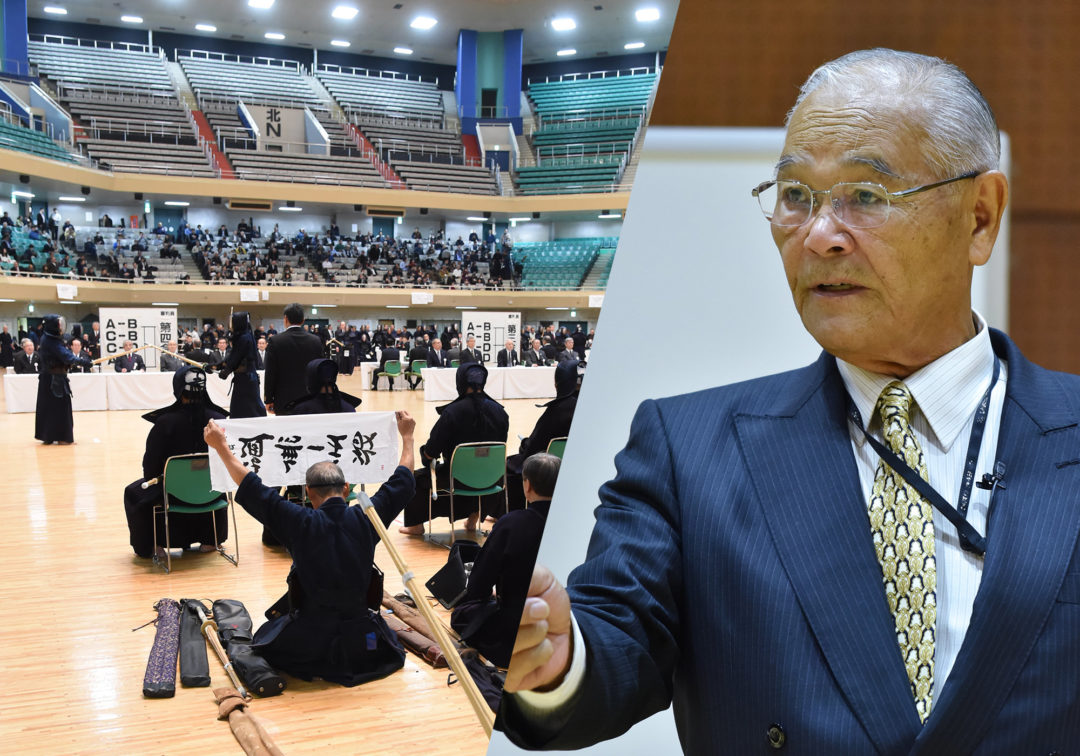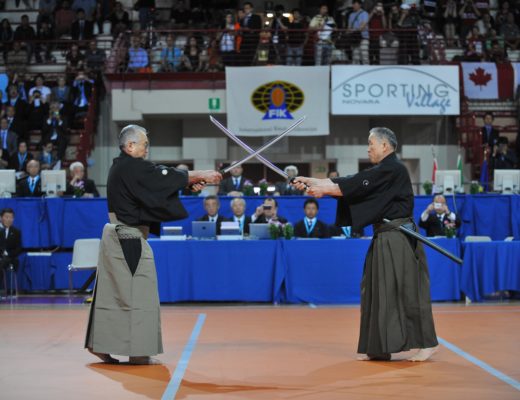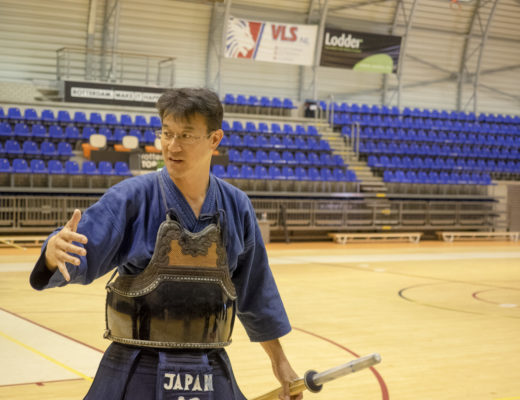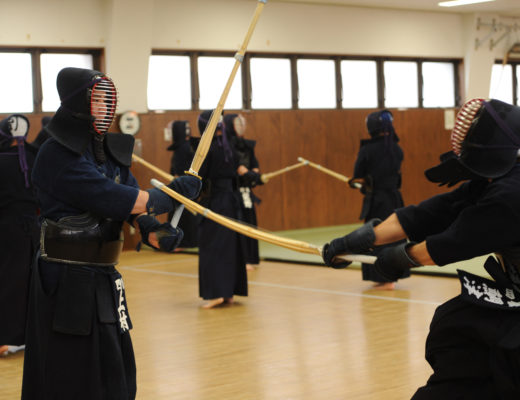2019.4 KENDOJIDAI
Japanese arts and crafts have been enhanced by the clan system throughout history. As with the way of arts, kendo has also been promoted and developed with the quality determined by the grade system. Kendo grade examinations require proficiency and correct kendo in the process of training regardless of age. In particular, the 8th dan examination is the most difficult one with a pass rate of 0.7%.
So first of all, let’s give a brief overview of analysis and short comments by the judges on the 8th dan examination over the past five years from the monthly magazine “Kenso” which is published by the All Japan Kendo Federation. In addition, we will examine the 8th dan examination from the perspective of the judge’s committee and the 8th dan candidates.

Hayashi Kunio / Born in 1944 in Gifu Prefecture. Emeritus Professor of the Chukyo University, Chukyo University Kendo Club Director, 8th dan in kendo.
Body maintenance and training for the elderly
The total number of examinees over the past five years was 8269, and the average number of examinees per event was 1654. Looking at the age of the examinees, it ranges from 46 to 92 years old, the peak is at 65 years old and then there is a downward tendency.
The number of examinees by age group is 497 in their 40’s, 2442 in their 50’s, 3818 in their 60’s, 1111 in their 70’s, 54 in their 80’s, 7 in their 90’s.
Those in their 60’s are the largest group, followed by those in their 50’s and 70’s. In addition, 54 people in their 80’s and 90’s are truly proof of lifelong kendo. There are no other sports like this martial art where you can age and compete seriously in this way.
Now, there are many people in their 60’s in the 8th dan examination, and among them the age group of 65 were the most with 436 people. It can be inferred that this is due to the 60-year-old retirement age. It is dangerous to become absorbed with kendo due to an abundance of free time.
That is why I am reminded of Okamura Tadanori (8th dan kendo), formerly part of the High School Physical Education Federation. After this sensei’s retirement, he had enough time to prepare for his 8th dan examination, and I heard he became absorbed with kendo at a Societal Physical Education Seminar.
So I told him this could be dangerous. This is because suddenly increasing the amount of training will cause strain on your body and cause injury. Therefore I asked him to gradually increase his keiko quantity and maintain his body through additional training. As a result, the teacher did his body maintenance at the training center of Tokai University and passed his 8th dan exam. Okamura sensei told me his opinion of this training “Hayashi sensei, this training is amazing, my body moves by its own during keiko, my strikes are strong and I can disturb my opponents so that they are forced to attack. I never experienced it before.”
For elderly people in their 60’s, 70’s, 80’s and 90’s, I recommend stretching and running exercises.
Kendo practice is a type of movement that hardens the body. This is because we take kamae while holding a shinai, stabilizing the waist, and striking while hardening the stomach area.
In addition, if the opponent comes at you for a strike, you can respond with oji-waza or taiatari. This makes your waist stiff. Therefore, stretching exercises to soften the body are important. These are exercises that stretch muscles and tendons to increase the range of motion of joints.
Another training method is running exercise. As you get older, your lower body muscle strength declines significantly. Therefore, it is necessary to prevent a decrease in leg strength by running. In addition, I recommend a leg flexion / extension exercise by doing squats. You can practice these exercises anytime, anywhere. Do it straight away when the opportunity is there.
Another recommendation for the elderly is breathing exercises. The breathing method is to take kamae without shinai, exhale completely and breathe in naturally. In this case, it is important to breathe out completely and put strength in the stomach area. I recommend that you continue this breathing method every day. This breathing method was taught by Kondo Toshio sensei who left this world at the age of 96.
Every day will be nicer with this breathing practice that I have been doing since the age of 70. Therefore, I recommend it for elderly people.
Recommended keiko for senior swordsmen
I have been able to maintain my body as a result of meeting many swordsmen since I have started kendo. Even now, I gratefully enjoy meeting people in various places.
The rest of this article is only available for Kendo Jidai International subscribers!






No Comments